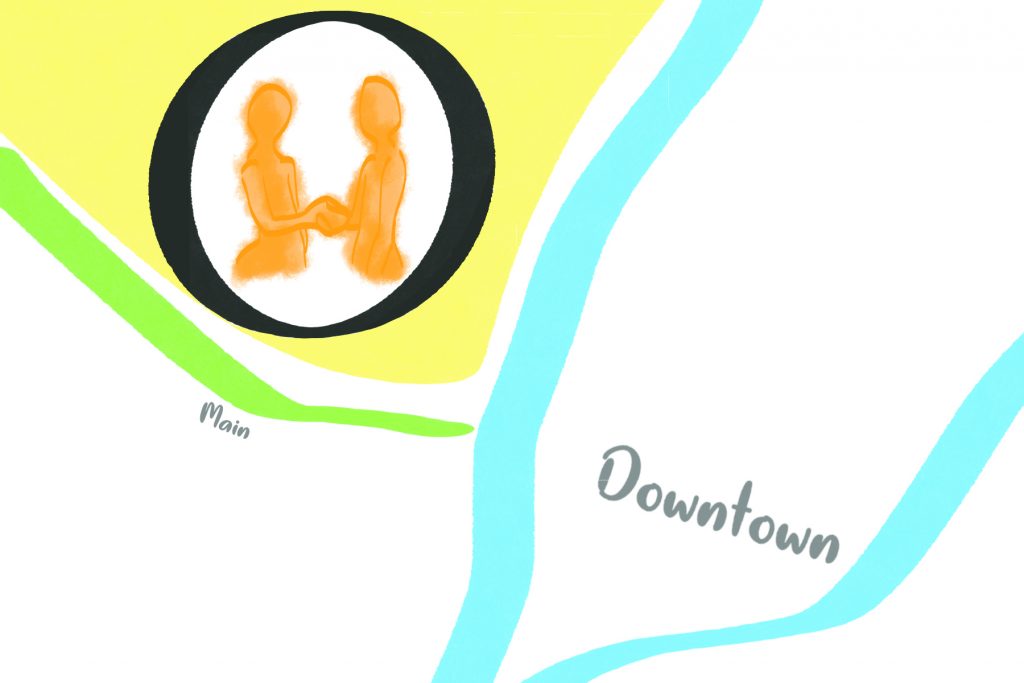The North of Main (NoMa) neighborhood, one of the several Binghamton areas affected by poverty, is the subject of the Town-Gown Advisory Board’s (TGAB) newly approved $25,000 proposal for community improvement.
The TGAB was formed with the intent of bridging and improving relations between Binghamton University and the city of Binghamton. The board is comprised of University faculty, students and city officials, making up five subcommittees: Student Housing, Transportation and Parking, Dangerous Drinking/Underage Drinking, Safety and Promoting and Cultivating Positive Community Engagement. The latter committee recently submitted the proposal to boost development in the NoMa neighborhood.
According to a press release from TGAB, the proposal aims to develop new programs in the area and improve resident participation in community programs and activities. The NoMa neighborhood is located north of Main Street, near Downtown Binghamton. According to Khaleel James, vice president for multicultural affairs and a junior double-majoring in economics and human development, the NoMa neighborhood is being looked at for the proposal because of its diversity and the wealth of potential opportunities it presents.
“Diversity is NoMa’s most important asset,” James wrote in an email. “It has a diversity of people, architecture and community organizations, along with the diversity of land use.”
According to James, the NoMa neighborhood has had a long history of economic struggle, with almost 80 percent of residents living in poverty. The proposal is not the first effort to rejuvenate the neighborhood.
“Many revitalization projects, community events and safety initiatives are expanding to continually improve the lives of the people who live, [work] and play there,” James wrote. “A recent example is Safe Streets, a nonprofit organization that was founded to reduce crime in the NoMa neighborhood.”
BC HEARS (Higher Education, Access, Retention and Success), a program dedicated to assisting Binghamton community members in receiving an education, has also worked in the NoMa neighborhood before. According to James, they collaborate with the NoMa Community Center in order to help residents gain access to higher education.
“The challenge that the NoMa group (community group) is facing is long term sustainability,” he wrote.
That challenge is the primary reason the TGAB committee was formed, and it aims to ensure the efforts that have been made to improve living conditions in Binghamton communities do not come to an end. The proposal also requires a partnership between a BU student and a resident of the community.
”The proposal asked for a BU graduate student to pair with a hired resident to continue improvement of the neighborhood at the grassroots level,” James wrote.
According to a press release, the resident chosen for this position will work approximately 15 hours a week at the NoMa Community Center to increase community engagement and get more members of the NoMa community interested in new initiatives. The subcommittee has also requested funding to cultivate new community programs, projects and community cafes at the community center.
Randall Edouard, co-chair of the TGAB, assistant vice president for student affairs and interim dean of students, praised the collaboration between BU and the NoMa community.
“With this project, it is clear to see how the University and the community residents intersect and it is extremely positive for all parties involved,” Edouard wrote in an email. “The need to increase resident participation and ownership of community programming in this specific area will create additional volunteer and service-learning opportunities for Binghamton University faculty, staff and students within NoMa.”
James believes the proposal will have a positive impact on the neighborhood.
“NoMa is not a community of disparate residents but a growing community of engaged citizens who participate in community organizations and events as well as in the development of community spaces and assets,” he wrote.



